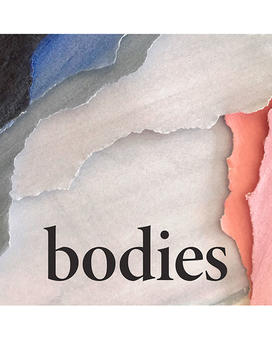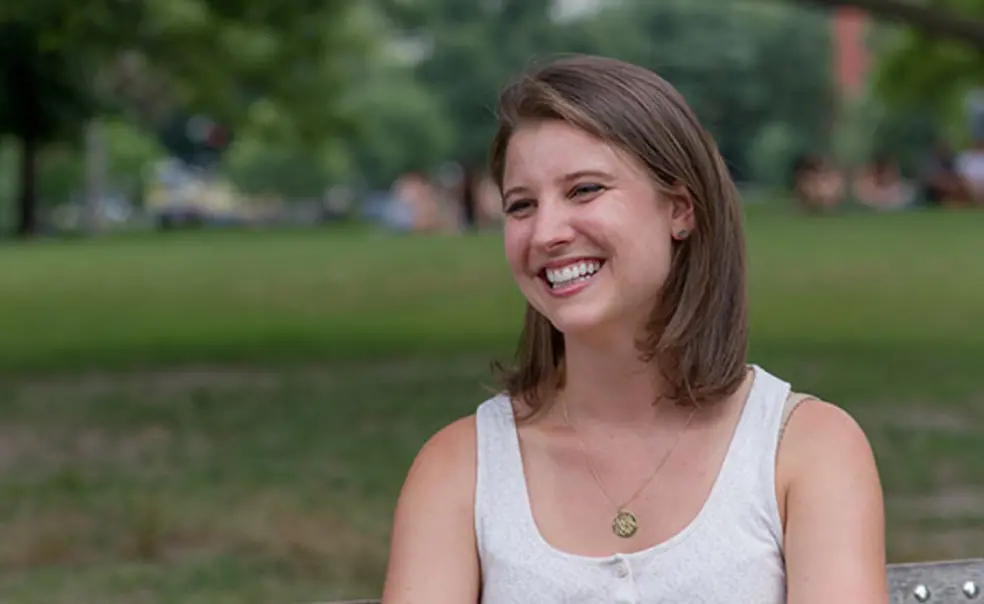Podcast Spotlight: Allison Behringer ’12 Delves Into Medical Mysteries
Allison Behringer ’12 made her podcasting debut in 2015 with a first-person documentary series called The Intern. It was nominally about the experiences of a tech-company intern, but Behringer, a sociology major at Princeton, stretched the boundaries of the show description to include episodes about diversity and inclusion in the tech world and the stresses of negotiating a pay raise.
In her new podcast, Bodies, Behringer takes a deep dive into medical mysteries, exploring both the physical causes of health issues and the societal factors that contribute to them. Bodies is supported by KCRW’s Independent Producer Project, and the first four episodes of the debut season are available at bodiespodcast.com. Earlier this month, Behringer spoke with PAW’s Brett Tomlinson.
On the power of podcasts
“The Intern definitely made me think, ‘OK, this is the medium that I want to keep working in.’ It’s a really beautiful format for telling stories because it’s similar to reading in that you get to imagine a lot of the story in your mind — you get to imagine the setting and the characters. But you get the feeling of video in that you’re hearing the person. You get to hear that and feel the intimacy of it all.”
THE PLAYLIST
Three more podcasts to check out this month
1. Can you teach good writing? JEFFREY R. YOUNG ’95 poses the question to Princeton’s JOHN McPHEE ’53 on the EdSurge Podcast.
2. ISAAC SERWANGA ’13 sits down with TREVOR WILKINS ’13, co-founder of the education app Kudzoo, on the debut episode of The Princeton APBA Podcast.
3. On Last Things First, SEAN L. McCARTHY ’93 interviews comedian Jonathan Katz, creator of Dr. Katz.
The origin of Bodies
“Bodies was inspired by a personal experience. Three or four years ago, basically all of a sudden sex became painful, and I couldn’t figure out why. And I eventually did figure out the cause. Spoiler alert: It was the birth-control pill. That story was something I didn’t talk about for a long time. Only my closest friends knew. And I started thinking, ‘I want to share this story.’
“The more I started talking about it, the more other women started sharing stories with me — similar stories about painful sex or birth control or just about the whole myriad of experiences that come with having a woman’s body. And then it occurred to me: This isn’t just a one-off episode about my story. This is a show. There are so many stories that aren’t being told right now.”
A sense of community
“I see Bodies not just as a podcast but as a community where people are sharing stories with one another. One of the inspirations for Bodies is the book Our Bodies, Ourselves which was [written by] a women’s collective in Boston. And it was formed on the same philosophy, which is that women sharing stories with each other is actually a really powerful source of information. And so that was the idea for the Bodies Facebook group.
“I thought I’d have to go in there and ask questions to really get the conversation started. And there was a week or so when I was producing and hadn’t been on the Facebook group, so I signed in and started scrolling through. Women were posting stories: Does anyone have ideas about this? How do I find an expert to help me with this? And I didn’t need to do anything! … It’s been incredibly humbling to know that the stories we’re telling are just a drop in the bucket. I’ve learned a tremendous amount from the people reaching out to me.”
Image 
Inclusively defined

“I’ve always conceived the show to be a feminist critique of the ways in which the health care system falls short when it comes to women’s health. But if you look at the [show description] of Bodies, and the images that we’ve chosen for the cover art, you’ll find that there’s no mention of the word ‘woman,’ there are no bold pink, red, and yellow splashes. And that’s for two reasons: First, I think that everyone should listen to this podcast, and everyone can enjoy highly intimate, immersive storytelling, no matter whether you’re the same biological sex as someone; and the second reason is because I think the word ‘woman’ doesn’t include all the bodies and identities that we hope to cover. So, for example, people who identify as non-binary or trans people.”
Opening up
“I think that it’s been hugely helpful that the first episode is my own story. When I talk to people, I can kind of point to that first episode as the conversation starter. We tend to think, ‘Oh my gosh, how are people sharing these stories that they’re not telling anyone?’ But what I’ve found is that people dying to tell these stories, and my inbox is overflowing with people sharing their stories with me. It is remarkable. Once you give people an opportunity to share these things, people really want to share them. It’s just that no one really asks.”
A deeper understanding
“Each episode is highly centered around one person and their experience. So over the course of my reporting, I spend hours with the people. The third episode, Reese — that was basically two interviews, each of which were three hours, and then I followed her around. I went with her to work, I met up with her when she was with her friends, and I recorded all of that.
“Imagine having a 10-hour conversation with a really interesting person and then getting to listen to that conversation 20 or 30 more times. It’s this amazing opportunity to really try to understand what motivates a person, what brings them joy, what are their flaws, what do they want, what’s keeping them from what they want. It’s been incredible to have the privilege to try to bring a part of their story to the world. And some of the most rewarding feedback I’ve received is from the people who’ve been in the episodes, who say that this feels right to me and to my story. That’s really the aim, at the end of the day.”
Interview conducted and condensed by Brett Tomlinson
Alumni, if you have a podcast that you’d like to share with PAW readers, please email us at paw@princeton.edu.












No responses yet